Dashain is all about catching up with family members, relatives, and friends and of course, eating scrumptious meals.
The big day finally dawns in. There is a festive air around and some frenzy activity in the kitchen already. Dashain or Dusshera is the biggest and the longest festival of the Gorkhali people.
Dashain festival would mean new clothes and food fit for royalty. Early morning and the preparation for the day’s feast has already begun. After 9 days of Navratri puja and fasting, the 10th day marks the beginning of Dashain festivity, and with it the annual gastronomical indulgence. The 5 days-long festivities are marked by family gatherings and sumptuous food and endless rounds of drinks.
Preparation for the celebrations starts early. Early morning, a couple of goats and a pig has also been slaughtered in the neighborhood. Chicken and fish have been nicely marinating in salt and turmeric from the day before. The rice is being cleaned and soaked for either an aromatic pulao or just plain rice. Assorted seasonal vegetables are being sorted out, mainly for the strict vegetarians.
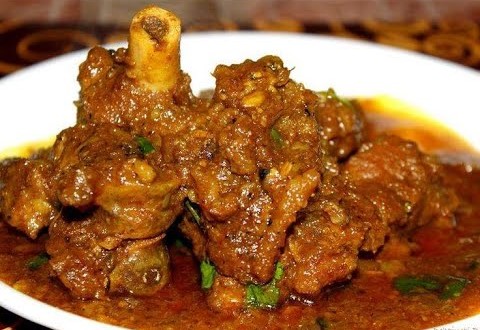
Mutton is an integral part of the Dashain feast. A festive meal would not be complete without a Khasi ko Masu (mutton curry) cooked with big chunks of Ishkus (Chayote Squash) in a gravy of cumin, coriander and garam masala, red chilli powder, garlic and ginger paste and a generous amount of mustard oil. No part of the goat is wasted. The prime cuts go for the curry. The head, lungs and the lesser cuts for a spicy fry loaded with green chillies called Pachauney. The entrails turn into another all-time favourite appetiser- Karchi Marchi- a spicy dry fry with onions, chillies, tomatoes, ginger-garlic and coriander leaves. Karchi Marchi will be later served with drinks, along with Mula ko Acchar -a hot and savoury pickle made with radish and churpi (a light Ricotta type local cottage cheese), onions, green chillies, tomatoes or the spicy Aloo Til Achar (boiled potatoes with roasted sesame seeds powder, tempered with fenugreek seeds, green chillies and onions). The goat trotters will be made into another classic favourite Khasi ko Khutta ko Achar, a hot and fiery curry/pickle. Khasi ko Sekuwa (marinated grilled mutton) will also find a place served along with drinks and other appetisers.
For Pork lovers, there will be the classic combination of Sungur ko Masu ra Rayo Saag (Pork with mustard greens, cooked in a simple tomato-based gravy) or the Sungur ko Khutta ko Achar (a close cousin of the Khasi ko Khutta ko Achar, prepared in a similar style). Another favourite dish would be Sukako Sungur ko Masu (Smoked and dried pork with dried chilly powder, salt and turmeric), served thinly sliced. Chicken and fish dishes are prepared in typical North India or Bengali style, giving the dishes a pan-India flavour. A traditional dish with the Kirat community of the Indian Gorkhas would be Wachipa, made with rice, minced chicken, and powder made out of burnt feathers of a chicken-the powder gives a unique bitter taste.
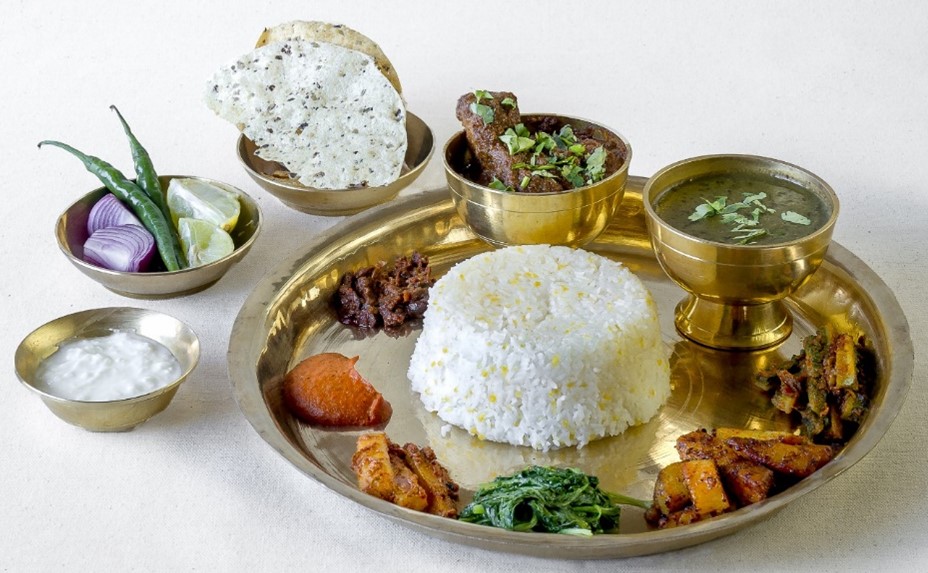
The hot and spicy appetizers would need something to wash it down. Raksi (local wine) is served in rural households, while modern wines, brandies and whiskeys, beer would find a place in the urban areas. Kodoko Jaanr and Nigar (local finger millet beers) would also be seen fighting for elbow room.
Meats cooked, appetizers ready, now it’s the turn of vegetables and dals. The occasion calls for the classic Nepali/Indian Gorkhali favourite Kalo dal (Black Gram Lentil soup) tempered with small pieces of onions in ghee. A Mixed Vegetable Tarkari (Curry) made with seasonal veggies, a lone paneer dish and some green vegetables are given a place in the festive menu. Papads are fried (again, a North Indian influence), a green salad for the health-conscious prepped up and some Aloo Dum, a perianal favourite spicy potato curry thrown in, for good measure.
No festivity is complete without Sel Roti, a traditional sweet, ring-shaped rice bread. A day before Dashain, menfolk would be engaged in beating the rice, soaked overnight, in a wooden Okhli Musli to a fine powder. A thick batter is prepared by adding milk, water, cooking oil, sugar, ghee, butter, cardamom, cloves and other flavours of personal choice the rice flour and is deep-fried in boiling oil or ghee in ring shapes until it turns light brown on both sides. It is a labour of love, and prepared with expert hands, mostly by ladies of the households. Sel Roti, with a shelf life of about a month, if stored properly are often sent as special gifts to family members living away from home or used as prasad in pujas. Generally, it is served with Gorkhali Achar (cooked onions and tomato, green chilly pickle), Khasi/Sungur ko Khutta ko Achar, Karchi Marchi, Aloo Til Achar or Aloo Dum. Or just with plain tea as a snack.
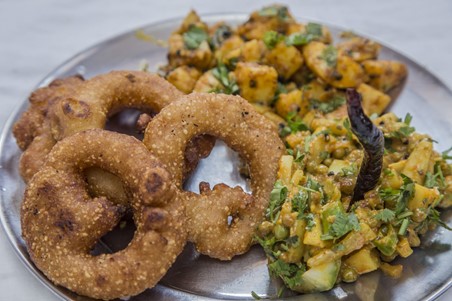
The dal-bhat-tarkari-achar (legume/lentil soup, rice, vegetable curry and pickle) being a stable food with the Indian Gorkhas, rice is the centrepiece of the festive spread as well and holds all the different meat and vegetable dishes together in perfect synergy. Rice is prepared last and as it is left to gently cook, it is time for the family members to wash up and get ready for the traditional Tika ceremony (blessings from elders) before the feasting starts.
Dashain is all about catching up with family members, relatives and friends and of course, eating scrumptious meals. This continues for five days during which families and relatives visit each other to exchange gifts and greetings and eat.
Every day favourites like momo, thukpa, kinema (spicy curry made from fermented soya bean paste) is given a miss during the festivities, but after five days of continuous feasting, a quintessential Indian Nepalese/Gorkhali dish makes a grand comeback- Gundruk ko Jhol. This basic humble soup is made from fermented green vegetables like mustard, turnip, radish, cauliflower leaves, known for its tangy sour taste and considered to be good for digestion. A simple bowl of Gundruk ko Jhol with plain rice is gentle on the stomach after nearly a week of rich, spicy food and drinking.
Once the Dashain festival is over, it is back to the basic- dal-bhat-tarkari-achar. Momos and Thukpas will rule our palates once again, along with other traditional favourites. But that’s another gastronomical journey altogether!
Writes: Sarikah Atreya

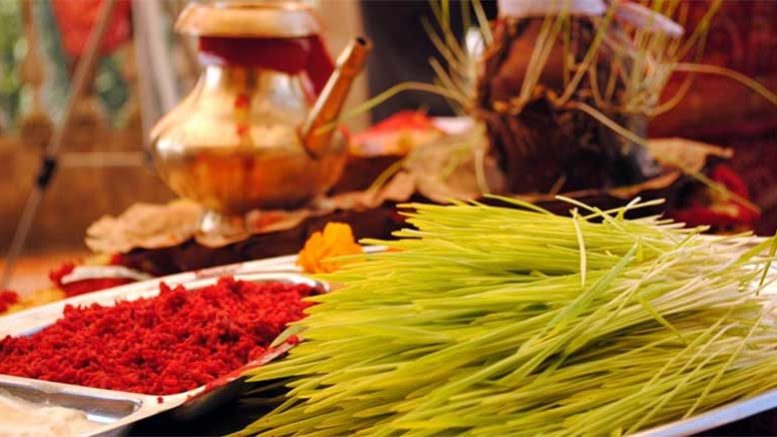
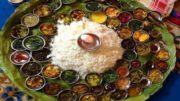
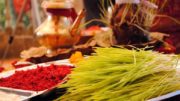
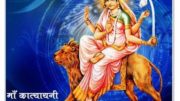

Be the first to comment on "Dashain Specials – The Annual Gastronomical Indulgence"